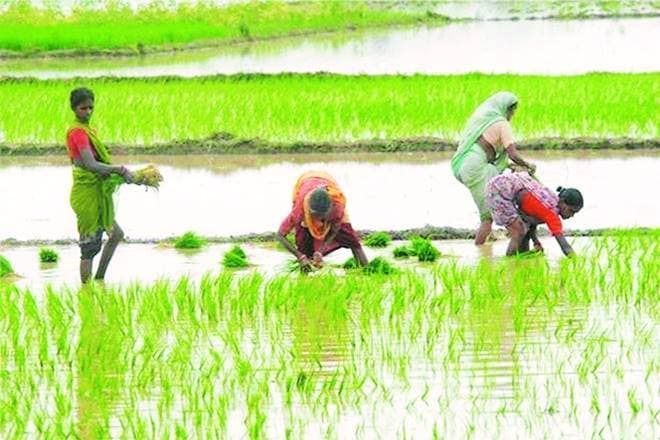The normal onset and steady progress of monsoon have increased the sowing area under kharif crops to more than double the level a year ago until June 26. By June 19, the increase was 39%. This has boosted the prospects of another year of record grains production.
The area under all kharif crops was at 315.6 lakh hectare as on June 26, nearly 30% of the ‘normal area’ of 1,064 lakh hectare. Monsoon covered the entire country on June 26, 12 days earlier than the normal schedule and at the fastest pace since 2013.
Though the government is betting on a bumper harvest to increase the overall agriculture growth and boost the rural economy, farm-gate prices will remain a key concern. A big positive is the easing of farm trade through a new central law, which may allow at least a section of farmers to find new buyers, including food processors and retail biggies.
Agriculture and allied activities are likely to see a 2.5% growth in FY21 as the effects of the pandemic on the sector have so far been varied, as these activities are not homogeneous, with each having its own set of dynamics, according to Crisil.
Gross value added (GVA) in India’s agriculture and allied sectors grew 4% in FY20 while the sector’s average growth in the past six years was about 3.2%.
Rainfall across the country was 22% more than the long period average (LPA) and all the major agricultural states have received normal or higher showers during June 1-27.
This time around, there has been an increase in area under cotton and groundnut in Gujarat, the two main kharif crops in the state, due to early arrival of monsoon. “The state received rains in the first week of June, a week earlier than normal. Besides, the quantity and distribution of rainfall is also very good so far,” said a state agriculture department official.
The sowing area under cotton and groundnut more than doubled to 11.6 lakh hectare and 12.4 lakh lakh hectare, respectively, in Gujarat even as both are competing crops.
“The cotton sowing normally ends in Punjab and Haryana before June while it continues until mid-July in Gujarat, Maharashtra and Madhya Pradesh. This year, the sowing may be completed a week earlier as rains came early in both Gujarat and Maharashtra. The cotton area in Maharashtra may increase as it has been seen that farmers are shifting from paddy and soyabean,” said VN Waghmare, director of Nagpur-based Central Institute of Cotton Research.
The maize acreage in Haryana and Punjab has not shown any improvement though it was widely expected that farmers would opt for these crops due to less availability of migrant labours who work for paddy transplanting. The maize and cotton acreage in Punjab is down while paddy has surged despite labour problems.
“The Haryana government has been promoting maize to make farmers shift from water-guzzling paddy crop,” said Sujay Rakshit, director of Ludhiana-based Indian Institute of Maize Research. He said many farmers are ready to adopt maize as it consumes one-fourth of water required for paddy. However, farmers look forward to selling at the MSP, for which the government has to make a plan, Rakshit added.
The government has set a target to raise the annual food grain production by 2% at 298.3 million tonne (MT), comprising 149.92 MT in kharif season and 148.4 MT during rabi, for the 2020-21 crop year (July-June) after the IMD predicted a ‘normal’ monsoon (102% of LPA). In 2019-20, production was 291.95 MT, against the target of 291.1 MT.


